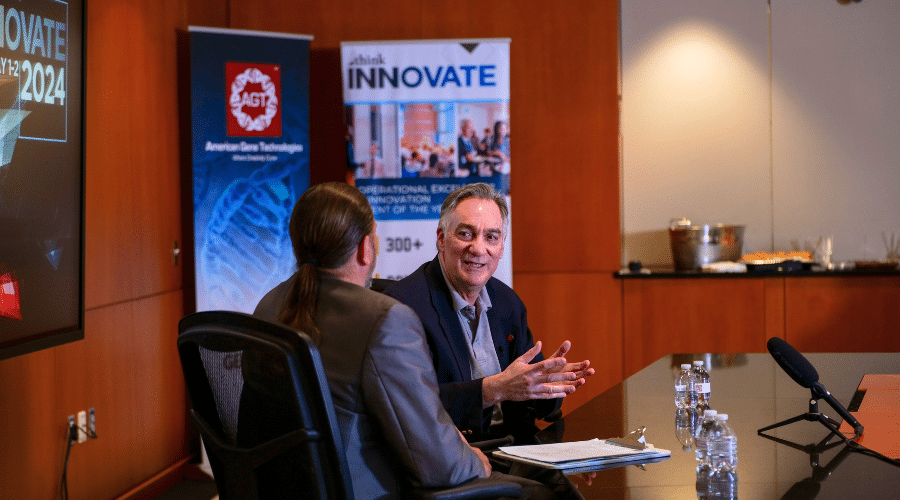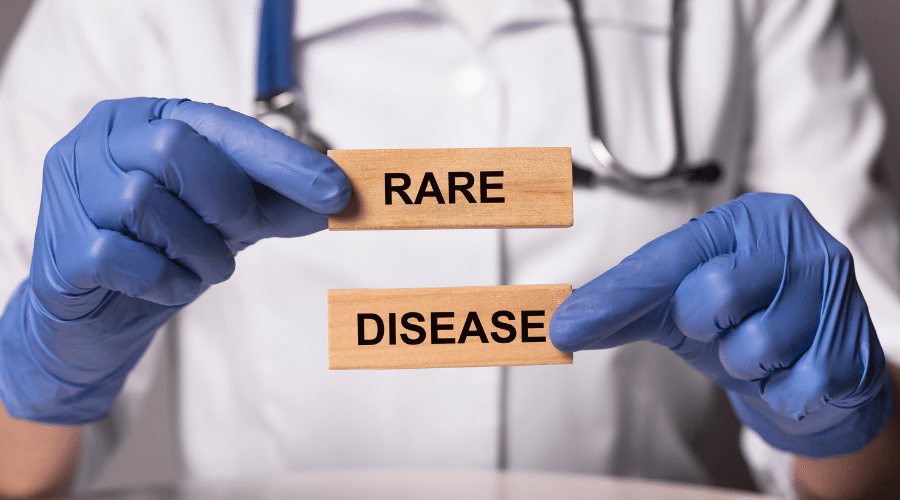How does Jeff Galvin, CEO of Addimmune, THINK?

Jeff Galvin Is Taking a New Approach to Medicine
There’s a revolution brewing in medicine, and the paradigm-shifting innovations in the gene and cell therapy space are right at the heart of the movement. Jeff Galvin, CEO of American Gene Technologies® (AGT ™) and Addimmune™, has seen firsthand what gene and cell therapies can do. With a background in economics, software and engineering he has a remarkable vision of how these technologies will change the healthcare landscape. Genetic medicine may seem like a daunting topic but THINK’s Fireside Chat with Jeff Galvin, linked below, provides an easy-to-understand conversation about:
- How gene therapy parallels software development
- The principles of the gene and cell therapy business
- Differences in the gene therapy mindset, compared to the pharmaceutical mindset
- Real-world examples of gene therapy, including details from Addimmune’s clinical trial for AGT103-T, a potential cure for HIV

During the Fireside Chat, THINK extended a nomination to Jeff Galvin as the 2024 INNOVATE champion. In response, Jeff suggested that the honor should be extended to the entire Addimmune team. During THINK’s 1st annual INNOVATE conference, slated for 2024, we hope to see Jeff accept the award on behalf of his entire company. You’ve got our vote Jeff!
The Parallels Between Software and Medicine
When he graduated from Harvard University in the 80s, Jeff dove headfirst into one of the most impactful technological explosions of our age: the digital revolution. Starting his career at Hewlett Packard as a software engineer, Jeff spent the next decade working in technology, taking on communication and leadership roles that left him with a refined ability to create, debug, and explain software. Little did he know that these skills would be fundamental to his work in potentially curative gene and cell therapies for HIV, cancer, and rare diseases.
“I came from a different industry and that outside perspective did lead to a lot of the ability to predict the technology curve that I wanted to experience again. Even though it was only related by the way it operates: software for the human computer, and software for the digital computer.” - Jeff Galvin
Software for the human computer is not science fiction, it’s happening right now. Gene and cell therapy is therapeutic genetic code, and just like digital code, the process of creating a solution, testing it, and debugging it refines the code over time to create the best solution possible. Traditional drug development involves testing a drug candidate until a pass/fail point then either moving forward or starting all over again with a new drug candidate. However, gene and cell therapy is designed, not discovered. Iterating and refining therapeutic genetic code has produced transformative gene therapies for Hemophilia A and B, Spinal Muscular Atrophy, loss of vision from a genetic abnormality, and multiple forms of blood cancer. And the gene and cell therapy revolution is just starting.
A Vision of a New Biopharma Model
What happens to the field of medicine when gene and cell therapy creates long-living cells with the genetic instructions they need to manage a disease for a person’s whole life? How will the economic model change to accommodate new therapeutic modalities which are more expensive to manufacture, but actually cure people? Will there be more bioreactors and fewer pill factories? Ultimately, the physical features of the biotech/pharma industry will have to change, but so will the culture. The thought process will probably be the result of colliding the software industry’s “move fast and break things” mentality with the pharmaceutical industry’s slow-moving validation research culture.
“Forget everything you know about biotech and pharma.” - Jeff Galvin
Companies that adopt the most productive parts of those mentalities will experience the highest rates of success, and their contributions will ripple through the field of healthcare. Solving the root cause of a disease, or a class of diseases, has the potential to wipe out billions of dollars worth of palliative care annually, decreasing the need for daily medications, specialty care, and medical devices. Each of these new drugs will morph the healthcare industry in unique ways depending on the disease they address.
Validating the New Model with a Potential Cure for HIV
American Gene Technologies is not a disease-focused company, it is a platform-focused company. Because of his software engineering background, Galvin believes that developing parameterized genetic technologies is the key to building biotech’s equivalent to a software platform. The vision is to create an entire environment of reusable biological tools which can be applied to various diseases. Piecing together components from AGT’s platform would allow researchers to rapidly prototype disease-specific gene and cell therapies and then refine their design.
“It’s like if Microsoft introduced Excel and it had a few bugs in it – well if that was a traditional drug, you would throw it away and try again… With software, how do you get rid of the bad thing? You debug it!” - Jeff Galvin
Many of AGT’s early prototypes involved using the shell of an HIV virus to deliver therapeutic genes to cells, and in 2010, Jeff thought to simply load anti-HIV genes into a shell of the HIV virus. Using this method, he hypothesized that it should be easy to target the same cells that HIV naturally targets and deliver genes that protect them from infection. The technology came to be known as AGT103-T, and following a successful Phase 1 human trial, Addimmune was created with the sole purpose of bringing a cure for HIV to market.
Data from the Phase 1 trial indicated that AGT103-T was well-tolerated in humans, and data from a follow-on study indicated that all participants showed active immune responses to HIV when they discontinued antiretroviral medication. All participants who finished the follow-on study saw at least 100 times less virus in the blood, with some participants displaying data in the range of long-term non-progressors, who are people with HIV that are not progressing to AIDS despite the absence of medication.
As Addimmune continues the clinical development of AGT103-T, American Gene Technologies continues to develop its Phenylketonuria and Immuno-oncology programs. Jeff is optimistic that AGT103-T could prove a cure for millions of people living with HIV, and the first proof of concept for AGT’s technology platform. Reducing human suffering from serious human diseases is the core mission, and if Addimmune can provide a cure for HIV, imagine how many other diseases could be cured by adapting the technology platform.





